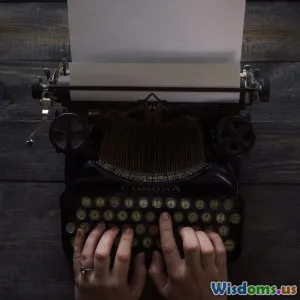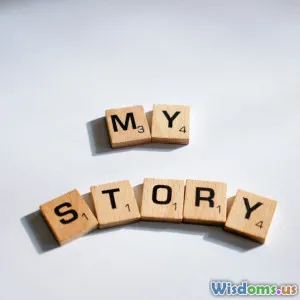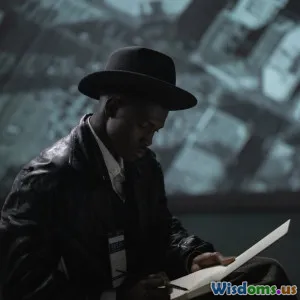
Character Flaws vs Redemption Why Readers Love Imperfect Heroes
7 min read Exploring why readers connect deeply with flawed heroes who find redemption and what this reveals about storytelling and human nature. (0 Reviews)
Character Flaws vs Redemption: Why Readers Love Imperfect Heroes
Introduction
In a world where perfection often seems unattainable and, paradoxically, unrelatable, stories featuring flawless heroes can feel distant or uninspiring. Readers crave complexity—they want characters who mirror the fragile and flawed nature of humanity itself. Whether it’s a beloved antihero, a morally ambiguous protagonist, or a deeply flawed yet redeemable character, these imperfect heroes spark a unique connection. But why do audiences respond so passionately to characters with flaws, especially when contrasted against the hopeful arcs of redemption? This article dives deep into the psychological, literary, and cultural reasons behind this phenomenon, demonstrating how imperfections enrich storytelling and create unforgettable narratives.
The Role of Character Flaws in Storytelling
Authenticity Through Imperfection
Flaws make characters believable. Philosopher Martha Nussbaum once argued that emotions and flaws reveal the "moral depth" of characters, making them authentic rather than archetypes. Perfect heroes risk being viewed as "cardboard" or aspirational constructs, lacking the nuance necessary for emotional engagement. Readers naturally empathize with struggles and vulnerabilities because these reflect human truth.
Example: Jay Gatsby from The Great Gatsby
Jay Gatsby’s flaws—his obsessive idealism and moral ambiguity—expose him as a tragic figure rather than a simple hero. His imperfections make his dream and downfall more poignant, illustrating that flawed characters embody complex human experiences.
Generating Conflict and Growth
Character flaws serve as engines of conflict, both internal and external. They challenge the protagonist, setting the stage for growth, self-discovery, and eventual transformation—or sometimes destruction. Without flaws, a hero’s journey often lacks tension or stakes, diminishing narrative drive.
Example: Walter White from Breaking Bad
Walter White’s arrogance and hubris catalyze the show’s plot, transforming a meek chemistry teacher into a complex antihero. His flaws heighten tension, keep viewers invested, and fuel his moral descent and struggle for redemption.
Redemption Arcs: The Power of Hope and Change
Why Redemption Resonates
Redemption satisfies a fundamental human desire: the belief in second chances. Cognitive psychology research indicates people are drawn to stories highlighting resilience and transformation—they inspire hope and encourage self-reflection. Redemption arcs reinforce the notion that mistakes are not final.
Redemption as Moral Resolution
In literature, redemption is often the moral counterpoint to character flaws. It offers closure, either through forgiveness, self-realization, or restitution. Readers experience catharsis, a cleansing emotional release, when seeing a flawed character reconcile with their past or redefine themselves.
Example: Severus Snape from Harry Potter
Snape’s redemption—revealed through his sacrifices and enduring love—transforms him from an antagonist into a heroic figure. His journey reassures readers about the complexity of morality.
Psychological Insights: Why Flawed and Redeemable Characters Appeal
Identification and Empathy
Readers are more likely to identify with characters who reflect their own imperfections, fostering empathy. Psychologist Marie-Laure Ryan points out that narrative empathy arises when readers engage with character struggles.
Projection and Self-Improvement
Flawed heroes allow readers to project their growth aspirations onto them. Witnessing a character’s redemption inspires readers to confront and forgive their own shortcomings.
Moral Ambiguity Promotes Deeper Engagement
Redemption stories challenge the black-and-white morality of traditional tales. The grey areas invite readers to consider the complexity of ethics in real life, promoting nuanced understanding and critical thinking.
Cultural Trends Supporting Imperfect Heroes
Rise of Antiheroes in Popular Media
Recent decades have seen an explosion in antihero popularity, from Tony Soprano to Katniss Everdeen. These characters embody moral flaws that make their journeys compelling, in part because they reflect societal skepticism about authority and perfectionism.
Diversity of Narratives and Complex Representation
Imperfect heroes often break stereotypes, showcasing diverse backgrounds and lived experiences. Redemption arcs underscore transformation not simply in individual terms but also as reflections of cultural or social shifts.
Crafting Imperfect, Redeemable Characters: Tips for Writers
Define Flaws Rooted in Backstory
Flaws should arise naturally from the character’s history and circumstances. Avoid superficial flaws for the sake of conflict; instead, aim for meaningful imperfections.
Balance Flaws with Strengths
An effective flawed character is multidimensional. For example, Katniss Everdeen’s fierce independence is both her strength and her flaw, causing emotional isolation yet survival.
Show Redemption Through Actions, Not Just Words
Redemption arcs require believable transformation that resonates emotionally. Demonstrating change through consistent decisions makes redemption credible.
Avoid Predictability
Twists in the redemption journey—whether successful or failed—keep the narrative fresh and engaging.
Conclusion
Readers’ enduring love for imperfect heroes lies in the profound human truths these characters embody—the tension of flaw and growth, failure and hope, darkness and light. Character flaws infuse stories with authenticity and tension, while redemption arcs offer emotional catharsis and moral reassurance. Together, they craft narratives that resonate deeply, reflecting the complexities of the human experience. As literature and media evolve, the imperfect hero remains a powerful mirror and guide for navigating the uncertainties of life, reminding us that imperfection is not weakness, but the essence of a meaningful journey.
Embrace imperfections and the hopeful promise of redemption—because in defects, we find the truest reflections of humanity.
Rate the Post
User Reviews
Popular Posts





















